Constipation
However, the presentation of this common problem is very vague and may vary from patient to patient and even among doctors of different specialties.
Therefore, modern gastroenterology and coloproctology use a special diagnostic scale for functional constipation. Chronic constipation can be diagnosed if symptoms have been present for at least six months and the patient has had at least two of the following situations in the last three months:
More than 25% of bowel movements are accompanied by straining;
Hard stools in more than 25% of bowel movements;
Feeling of incomplete bowel movement in more than 25% of bowel movements;
The need for manual assistance to facilitate bowel movements in more than 25% of bowel movements;
Feeling of blockage/obstruction in the rectum or anus in more than 25% of bowel movements;
Less than three bowel movements per week.
Until recently, it was believed that about 12% of adults worldwide suffer from chronic constipation on average. According to some reports, today only in the UK more than 50% of the population classifies themselves as suffering from constipation; in Germany this number is 30%, and in France it is about 20%. In Russia, according to one study, 34.3% of the population complains of constipation.
There are two main forms of constipation: constipation caused by slow movement of contents through the colon (impaired motor function of the intestine — dyskinesia, both hypomotor and hypermotor, as well as mechanical obstacles in the intestine), and constipation associated with impaired function of the rectum or anal sphincter, or obstructive bowel movements.Very often, the problem occurs in women who have given birth over the age of 50, when the hormonal background changes after menopause, affecting the structure and elasticity of connective tissue, resulting in a decrease in pelvic floor tone.Pathological processes in the rectum accompanied by pain during defecation (hemorrhoids, anal fissure, ulcerative lesions of the anal canal in Crohn's disease, rectal cancer) also cause "forced" constipation.
Only a coloproctologist specializing in pelvic floor problems can determine the presence of constipation in more detail and clarify the diagnosis.
What are the most common causes of constipation?
Errors in the diet: a diet high in animal fats (meat, dairy products, eggs), refined sugar, highly digestible carbohydrates (muffins, pastry flour products) and low in dietary fiber, especially insoluble dietary fiber;
Deliberate delay in defecation (postponing going to the toilet "at the first request of the intestine", the inability to immediately go to the toilet due to lack of action);
"Travelers' constipation" associated with a change in the nature of food and water;
Hormonal disorders of intestinal function associated with pregnancy and old age;
Laxative drug abuse. Frequent use of laxatives can lead to dependence on them, requiring an increase in the dose, which eventually leads to the development of a "lazy gut" that becomes unable to work independently;
Anal fissure and hemorrhoids that cause pain during bowel movements;
Irritable bowel syndrome (spastic colon syndrome), in which the balance of biologically active substances regulating intestinal motility is disrupted (the so-called primary dyskinesia of the colon);
Mechanical obstacles to the passage of intestinal contents (scars, narrowing of the intestinal lumen, tumors, diverticula, foreign bodies of the intestine;
Medications: some analgesics, antacids containing aluminum, antispasmodics, antidepressants, tranquilizers, iron preparations, anticonvulsants, calcium channel blockers;
Neurological diseases (parkinsonism, multiple sclerosis, ischemic stroke);
Forced bed rest in patients with concomitant diseases.
Only a doctor can establish the actual presence of constipation, understand the causes of its occurrence in a particular patient, and choose the right treatment strategy after a thorough analysis of complaints and after a laboratory and instrumental examination.
When should I see a doctor for constipation?
If there is no stool for more than 3 days, accompanied by abdominal pain;
If the difficulty with bowel movements lasts more than 3 weeks;
If proctological diseases (anal fissure, hemorrhoids) appear or worsen as a result of constipation;
If the shape of the feces changes (the type of balls is "sheep feces", ribbon—shaped feces), if mucus and liquid come out instead of feces, if an admixture of mucus and blood appears in the feces and on toilet paper;
If constipation is accompanied by nausea, fever, loss of appetite, abdominal pain;
Immediate medical attention is required if constipation is accompanied by severe bloating and the inability to release gases.
What studies can a doctor prescribe to identify the causes of constipation?
The doctor may prescribe the following tests to rule out the anatomical causes of constipation — diverticula, tumors, or other causes of narrowing of the intestinal lumen:
Rectosigmoscopy
Colonoscopy
Irrigoscopy
Stool analysis for hidden blood (if necessary)
If the patency of the colon is not impaired, the doctor prescribes special research methods to identify other causes of constipation — obstructive bowel movements (for example, rectocele) or "lazy colon" syndrome, since the treatment of these diseases varies.
Treatment of patients with chronic constipation
Treatment of chronic constipation requires considerable effort, primarily from the patient himself. Only with strict adherence to all recommendations is it possible to actually achieve regular stools.
The beginning of treatment for chronic constipation is a change in diet. It is necessary to increase the content of ballast substances in the diet — indigestible fiber — and introduce products that stimulate the motor activity of the large intestine:
Products with laxative effect: bread made from coarse flour, carrots, cucumbers, beets, zucchini, dried fruits, oats, nuts, sugars (lactulose).
Products that stimulate intestinal motility due to the formation of fermentation acids: honey, cane sugar, prunes, dried apricots, plums. Sweet apples, apricots, melon, pumpkin.
Organic acids that enhance perestalsis: kvass, fermented dairy products, pickled vegetables, citrus fruits.
Polyunsaturated fatty acids that facilitate intestinal movement and stimulate peristalsis: olive oil, sunflower oil, fish oil, soy, palm oil.
A prerequisite is to consume more liquid, which is necessary to improve the effect of dietary fiber. With prolonged constipation or in case of ineffectiveness of diet therapy, dietary fiber preparations, wheat bran or flax seeds are prescribed.
Bread made from premium flour, muffins, fatty meats, smoked meats, canned food, spicy dishes, chocolate, strong coffee, strong tea are excluded from the diet. The consumption of semolina porridge, rice, noodles, and potatoes is limited. Products that cause increased gas formation (legumes, cabbage, sorrel, spinach, apple and grape juices) are not recommended. Such changes in the nature of nutrition have a positive effect not only on constipation, but also on other proctological diseases such as diverticulosis, hemorrhoids, anal fissure, and the risk of developing polyps and colon cancer is reduced.
You should maintain an adequate level of physical activity: gymnastics in the morning, walking for at least 30 minutes a day, swimming, cycling, and other acceptable activities. Physical exercises stimulate the motor activity of the intestines, strengthen the muscles of the abdominal wall, and increase the tone of the entire body.
In cases where lifestyle and diet changes do not achieve the restoration of regular bowel movements, laxatives are usually the next treatment option. Traditional laxatives work in many, but not all, patients, and for some patients they may be unacceptable due to side effects, unpleasant taste, or application features.
Laxatives are divided into groups depending on the mechanism of their action.:
-
Drugs that increase the volume of intestinal contents
Psyllium (psyllium seed coat), methylcellulose: they retain water in the intestinal contents, soften the consistency of stool, increase stool volume and enhance motility. It is used as an initial remedy in the treatment of constipation, possible daily use, including during pregnancy. Taking medications should be accompanied by an increase in the amount of liquid in the diet to 2 liters.
-
Stool softening products
Mineral and other oils act mainly as surfactants, increase the water content in the stool, softening it. They are contraindicated in patients with acute intestinal obstruction or if it is suspected.
-
Osmotic products
Salts (magnesium sulfate, etc.), sugars (lactulose, etc.), polyethylene glycol (PEG). They retain water in the intestinal lumen using an osmotic gradient.
Undesirable effects: with prolonged use, saline agents cause electrolyte disturbances, polyethylene glycol — abdominal distension, diarrhea; lactulose — electrolyte disturbances, bloating, diarrhea, spastic abdominal pain.
-
Stimulants
Derivatives of diphenylmethane (bisacodyl, picosulfates), anthraquinones (senna, etc.). They reduce the absorption of water and electrolytes and increase their release into the intestinal lumen. In fact, all stimulants cause short-term, and with prolonged use, persistent diarrhea, leading to excessive fluid loss and electrolyte disturbances, primarily loss of potassium ions (hypokalemia). Potassium ions, along with other mechanisms, maintain intestinal smooth muscle tone, so a decrease in potassium concentration in the blood inevitably leads to relaxation of intestinal smooth muscles and increased constipation if it is caused by decreased intestinal tone. These laxatives can be used to treat episodic (not chronic) constipation, as they are more addictive than all other groups of drugs.
A laxative is considered suitable if it is followed by copious mushy, but not watery stools. The question of the systematic use of laxatives and their choice is decided only by the doctor and only after a thorough examination of the patient, weighing all the pros and cons of prescribing this drug to a particular patient.
Constipation in elderly patients
With age, the amount of food and water consumed decreases, physical activity, a bouquet of various "age-related" diseases accumulates and the associated need to take a large number of medications. The reflex of the act of defecation weakens and the sensitivity of the rectum decreases: elderly people often do not feel the filling of the rectum and do not feel the urge to defecate. Therefore, in old age, a larger volume of rectal filling is needed for the urge to empty. This is achieved by adding fluids and dietary fiber to the diet. When taking dietary fiber, the stool mass increases, facilitating the movement of intestinal contents.
Uncontrolled intake of laxatives in old age leads to the development of a "lazy gut" to a greater extent than in other age groups.
Only a doctor can choose the most suitable laxative for each patient. You should not ignore the doctor's recommendations and take laxatives yourself, it is unsafe for your health. It should also be remembered that switching to drug therapy for chronic constipation should not mean abandoning non-drug treatments: a healthy diet and physical activity should be firmly integrated into the lifestyle.
Why the EMC
The first and only clinic in Russia, created in the image of the world's leading clinics
EMC is a multidisciplinary center offering patients a high level of medical services and a personalized approach
Worldwide recognition and awards
 Learn more
Learn more
Worldwide recognition and awards
 Certificates and licenses
Certificates and licenses
Make an appointment for a consultation
Specify your contacts and we will contact you to clarify the details
Reviews
and new products of the EMC
.webp)


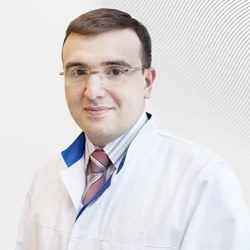
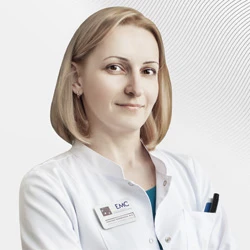
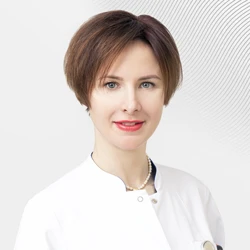

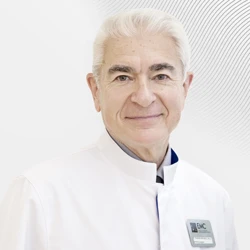
.webp)
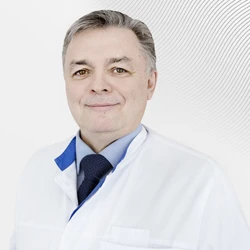
.webp)
.webp)


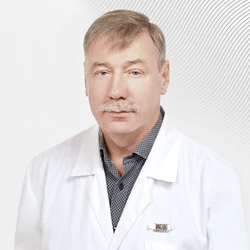

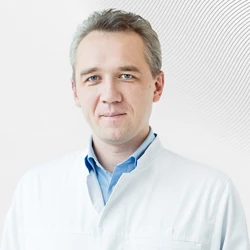
.webp)


